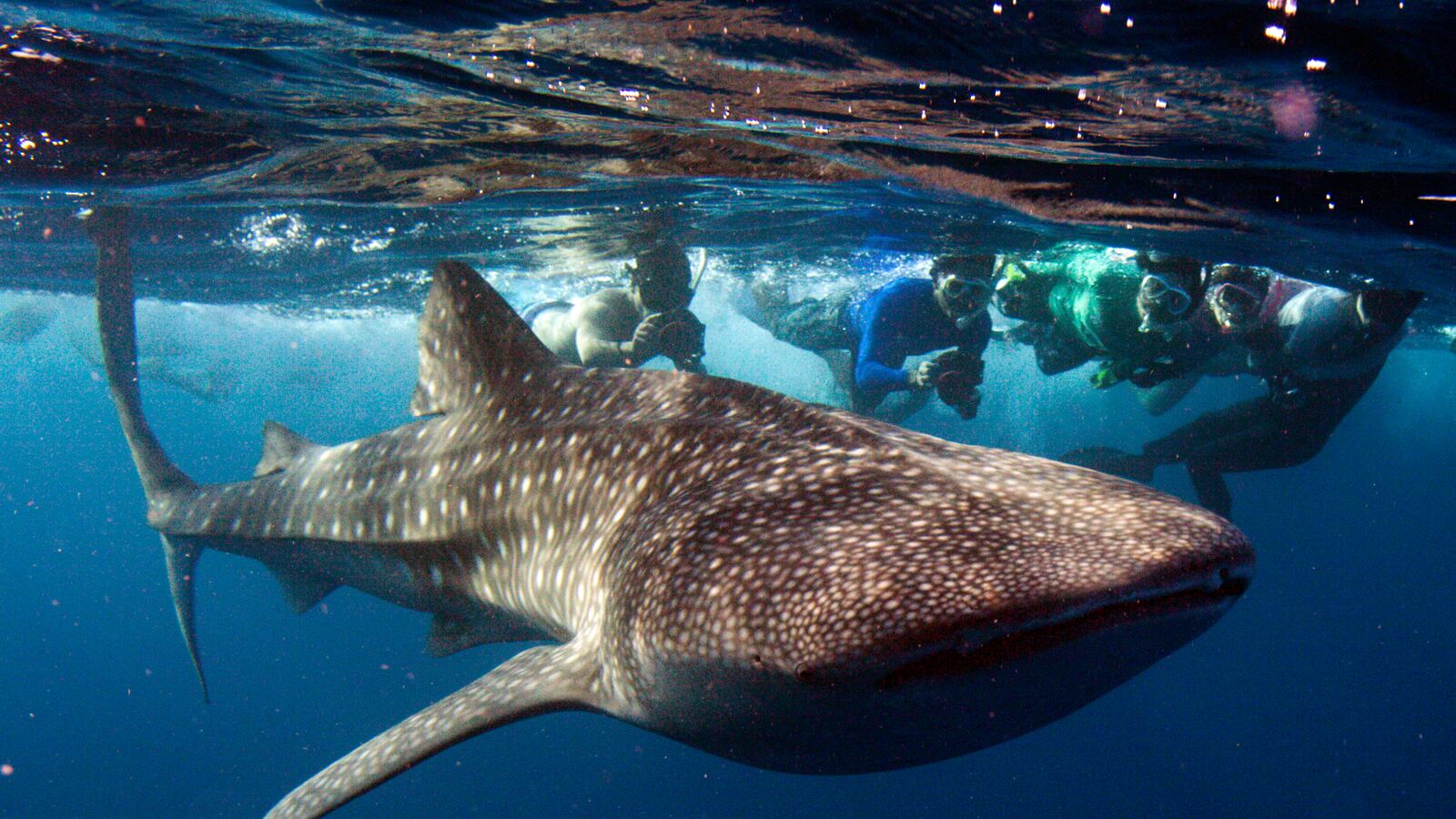Mass Games, Pyongyang, North Korea

Scary and spectacular in equal measure, North Korea’s Mass Games personify the country’s totalitarian politics—and serve as a strikingly well-ordered reminder that we are all just one of seven-odd billion souls strutting and fretting on this globe’s stage. Granted, not every earthling is gathered in Pyongyang for this event, but it sometimes seems like it: at the games, ranks of meticulously organized dancers and gymnasts (around 100,000 in all) create a visual display not of personal skill, but of perfect synchronicity. This is masses of humanity working together, greater than the sum of its parts.
The Games are held from mid-August to mid-October. September to October is less humid and more pleasant than summer in Korea.
Rub’ al-Khali (Empty Quarter), Oman
If the Inuit really have a blizzard of words for snow, the Bedu of Arabia must have likewise for sand, so utterly is their world consumed and ruled by it. Smothering a fifth of the Arabian Peninsula, the Rub’ al-Khali (“quarter of emptiness”) is the largest sand sea in the world. Its ripples—tinged red-orange by abundant feldspar—carpet more than 360,000 square miles of Oman, Yemen, the United Arab Emirates, and Saudi Arabia. Stand atop a dune, with naught but the most perfect of deserts visible in every direction, and you’ll feel as microscopic as one of those many grains of sand...
One of the easiest ways to access the Empty Quarter is by guided expedition from Salalah, Southern Oman.
Maldives

The Maldives make you feel piffling at the best of times: stand on one of its ravishing atolls, and you’re a speck on a speck in the Indian Ocean. But to be well and truly put in your place, jump into that paradisiacal blue for a close encounter with a gentle giant. The world’s largest fish, whale sharks, can reach up to 40 feet in length. Yet their plankton-eating preferences make them safe to snorkel with—although the lack of danger doesn’t decrease the sense of awe. Dangle mere feet from one of these behemoths to feel very small indeed.
Whale sharks travel depending on season: May to December they’re seen around the western islands; December to April, they’re found around the east.
Atacama Desert, Chile

Sure, you can be dwarfed by mountains and deserts, but that’s nothing to being dwarfed by the universe itself. In the unbeatably arid Atacama Desert, on Chile’s Pacific Coast, the air is so dry that clouds rarely cause celestial obstruction, and the people are so few that scant light pollutes the night—which means there are few better places for guaranteed stargazing of truly astronomical proportions. There are powerful telescopes here if you want to zoom in, but for an overview of awesome, simply lay back and blink up at the fathomless yonder; a criss-cross of constellations, planets, and who-knows-what-else will blink right back.
The European Southern Observatory operates three observing sites in the Atacama Desert: La Silla, Paranal, and Chajnantor.
York Minster, England

In the walled city of York, almost 200 miles north of London, construction of Europe’s greatest Gothic cathedral began in 1220 and went on for a staggering 250 years. It was worth the wait. Built to a classic cruciform design, the Minster towers above York’s famously narrow alleys and stout city walls. With intricate decor, spooky subterranean crypts and enormous chiming 10-tonne bells, this is cathedral design on steroids; it shows man at his most architecturally audacious, trying to reach up to God. Both its physical presence (not least the 75-foot-tall Great East Window) and its spiritual purpose are truly humbling.
York is crowded during the high-season summer months; an autumn visit (September to October) still provides warm days but with a fraction of the crowds.
Cave of Swallows, Mexico
Mexico’s Yucatán is like a Swiss cheese—a wholly holey land, riddled with concealed caverns. The Cave of Swallows (Sótano de las Golondrinas) is the second biggest of these sinkholes, and one of the most dramatic. Plunging nearly a quarter mile down amid the jungle, it could engulf the Empire State Building—not to mention the brave (or foolhardy) souls who dare to base jump or rappel down into its bowels. As if the scale wasn’t enough to make you feel puny, you’re also outnumbered: this Hadean realm is favored by thousands of white-collared swifts, which leave the cave at dawn and return at dusk in overwhelming avian swarms.
The Cave of Swallows is 8 miles from the village of Aquismón, just off Hwy 85 in the Huasteca region.
Great Australian Bight, Australia

Cliff upon cliff upon cliff upon cliff...Looking east from the frontier-feel town of Eucla along Australia’s barren south coast, there seems to be no end to this monster sea wall: with 200-to-400-feet high jags of pale sedimentary rock, the Great Australian Bight stretches largely uninterrupted for more than 620 miles of emptiness. Well, it’s empty-ish. Though backed by the equally lonely Nullarbor Plain, a surprising diversity of life has evolved to handle the hostile conditions: sea lions on the beaches, leafy sea dragons amid the kelp, platoons of southern right whales huffing offshore. Humans, however, are rarely seen—the Bight is more than man can chew...
Watch southern right whales from the coast at the Head of Bight lookout, 48 miles west of Yalata (South Australia), July to September.
Tane Mahuta (Lord of the Forest), Waipoua Forest, New Zealand

It’s not often you get to meet a god. But in the titanic kauri forests of far-north New Zealand it’s easy to believe you’re among deities: here, these truly colossal trees soar more than 160-feet high, dwarfing those who delve between them. Two venerable trees dominate the Waipoua forest: Te Matua Ngahere (Father of the Forest) presides over a clearing, but a little further north Tane Mahuta holds court. Named after the Maori forest god, the largest living kauri has stretched to 167 feet in height in its 1200-plus years. Hush, and be awed. As if you have a choice.
These beautiful trees are threatened by the kauri dieback disease; clean your shoes before and after visiting each forest.
Stromboli, Italy
Lest you forget our planet has a molten core, this volatile Italian isle will set you straight. Known as the ‘Lighthouse of the Mediterranean’ for its eruptive activity, Stromboli is part of the Aeolian Islands, an archipelago of seven volcanic peaks off the north coast of Sicily. The most awesome of the islands, Stromboli belches regular explosions of dust and steam, spitting rocks and, at times, lava down the barren Sciara del Fuoco trail into the Mediterranean Sea. Find a fisherman to take you out on the water at dusk to watch the natural pyrotechnics at their bellowing best.
Stromboli has no airport. Reach the Aeolians by ferry from Naples, or Milazzo on Sicily.
Concordia, Pakistan

This might well be the pudding bowl of the gods, a scooped-out icy enclave with gargantuan sides where every direction yields a terrifying, 5-plus-mile peak. In the recesses of Concordia you will feel really, really small. It’s a long trek into this sparkling basin, about a week from the trailhead near Skardu. But those who make it don’t regret it; to have their existence questioned by the icy face of Gasherbrum, the avalanches of Broad Peak, the creaking Baltoro Glacier shifting eerily underfoot and the might of K2 lording over it all.
Skardu is a 20- to 24-hour drive from Islamabad via the Karakoram Highway. Islamabad–Skardu flights take one hour.
Originally published as “Sights to Make You Feel Small" in Lonely Planet’s Best in Travel 2014 © 2013 Lonely Planet. All rights reserved.






